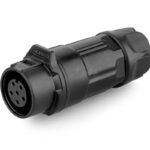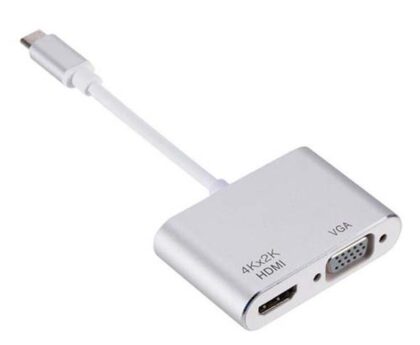Connectors are essential components of electronic devices, providing a physical interface for connecting various parts of a circuit. The pitch of a connector refers to the distance between adjacent pins or contacts, typically measured in millimeters or inches. While it may seem like a small detail, the pitch of a connector can have a significant impact on the overall performance and functionality of a device. In this blog post, we’ll explore the importance of connector pitch, factors that influence it, types of connector pitch, choosing the right pitch, and future trends and challenges.
Importance of Connector Pitch
The pitch of a connector is important for several reasons, including compatibility with other components, electrical performance and signal integrity, mechanical constraints and durability, and manufacturing cost and ease of assembly.
Compatibility with Other Components
One of the primary reasons why connector pitch is important is its compatibility with other components. A connector with a pitch that is too small or too large may not fit properly or securely with other components, leading to connectivity issues, mechanical stress, and potential damage. On the other hand, a connector with a compatible pitch can ensure a secure and reliable connection with other components.
Electrical Performance and Signal Integrity
The pitch of a connector can also have a significant impact on the electrical performance and signal integrity of a circuit. A smaller pitch can result in a shorter signal path, reducing the impedance and increasing the bandwidth of the connection. However, a smaller pitch can also lead to crosstalk and signal interference between adjacent pins or contacts. A larger pitch can provide better isolation between pins or contacts, reducing crosstalk and interference but increasing the signal path and impedance.
Mechanical Constraints and Durability
The pitch of a connector can also influence its mechanical constraints and durability. A smaller pitch can allow for a more compact and lightweight design, but it can also make the connector more fragile and prone to damage from mechanical stress, vibration, or shock. A larger pitch can provide better mechanical stability and durability but may require more space and weight. The choice of connector pitch should consider the mechanical constraints and environmental conditions of the application, such as temperature range, humidity, and shock resistance.
Manufacturing Cost and Ease of Assembly
The pitch of a connector can also affect its manufacturing cost and ease of assembly. A smaller pitch may require more precise and expensive manufacturing processes, such as surface-mount technology (SMT) or fine-pitch ball grid array (BGA) packages. A larger pitch may allow for simpler and more cost-effective manufacturing processes, such as through-hole technology (THT) or single-in-line (SIL) packages. The choice of connector pitch should consider the balance between manufacturing cost and ease of assembly with the desired performance and functionality.
Factors that Influence Connector Pitch
Several factors can influence the choice of connector pitch, including application requirements and specifications, size and space limitations, number of pins or contacts, signal frequency and data rate, environmental conditions and temperature range, and industry standards and regulations.
Application Requirements and Specifications
The application requirements and specifications of the connector, such as the type of signals, power, or data to be transmitted, can influence the choice of connector pitch. High-speed or high-bandwidth applications may require a smaller pitch to reduce the signal path and impedance, while low-speed or low-bandwidth applications may allow for a larger pitch. The choice of connector pitch should also consider the number of pins or contacts required for the application and any special features or functionalities, such as shielding, locking, or keying.
Size and Space Limitations
The size and space limitations of the device or system can also influence the choice of connector pitch. A smaller pitch can allow for a more compact and lightweight design, which may be necessary for portable or wearable devices. However, a smaller pitch may also make the assembly and maintenance of the device more challenging. A larger pitch may provide better mechanical stability and ease of assembly, but it may require more space and weight, which may not be feasible for some applications.
Number of Pins or Contacts
The number of pins or contacts required for the connector can also influence the choice of pitch. A larger number of pins or contacts may require a smaller pitch to fit within the space constraints, while a smaller number of pins or contacts may allow for a larger pitch. However, a smaller pitch with a larger number of pins or contacts may also increase the risk of crosstalk and signal interference.
Signal Frequency and Data Rate
The signal frequency and data rate of the connector can also affect the choice of pitch. A higher signal frequency or data rate may require a smaller pitch to reduce the signal path and impedance and maintain signal integrity. A lower signal frequency or data rate may allow for a larger pitch. The choice of connector pitch should also consider the signal attenuation, jitter, and noise levels at different frequencies and data rates.
Environmental Conditions and Temperature Range
The environmental conditions and temperature range of the application can also influence the choice of connector pitch. A smaller pitch may be more sensitive to temperature changes and environmental factors such as moisture, dust, or corrosion. A larger pitch may provide better insulation and protection against environmental factors but may not be suitable for high-temperature or high-humidity environments.
Industry Standards and Regulations
The choice of connector pitch may also be influenced by industry standards and regulations. Different industries and applications may have specific requirements and standards for connector pitch, such as military, aerospace, medical, or automotive. Compliance with these standards and regulations may require a specific pitch range, material, or plating.
Types of Connector Pitch
There are several types of connector pitch available, each with its own advantages and disadvantages. The most common types include fine-pitch connectors, coarse-pitch connectors, mixed-pitch connectors, variable-pitch connectors, and high-speed connectors.
Fine-Pitch Connectors
Fine-pitch connectors are those with a pitch of less than 1.27 mm or 0.05 inches. They are commonly used in high-density applications such as mobile devices, laptops, and cameras, where space is limited. Fine-pitch connectors can provide a high number of pins or contacts in a small form factor but may require specialized manufacturing and assembly processes.
Coarse-Pitch Connectors
Coarse-pitch connectors are those with a pitch of more than 2.54 mm or 0.1 inches. They are commonly used in low-density applications such as power supplies, audio, and industrial controls, where space is not a constraint. Coarse-pitch connectors can provide a high level of mechanical stability and ease of assembly but may not be suitable for high-speed or high-bandwidth applications.
Mixed-Pitch Connectors
Mixed-pitch connectors are those with a combination of different pitches within the same connector. They are commonly used in applications where a variety of signals, power, or data needs to be transmitted, such as telecommunications, networking, and automation. Mixed-pitch connectors can provide a flexible and versatile solution but may require additional design considerations and testing.
Variable-Pitch Connectors
Variable-pitch connectors are those with a variable pitch that can be adjusted to fit different requirements. They are commonly used in applications where flexibility and customization are necessary, such as medical devices, aerospace, and automotive. Variable-pitch connectors can provide a high level of adaptability and performance but may be more expensive and complex to manufacture.
High-Speed Connectors
High-speed connectors are those designed for applications that require high bandwidth and data rates, such as data centers, telecommunications, and multimedia. They are typically characterized by a pitch of less than 1 mm and a high number of pins or contacts. High-speed connectors can provide a reliable and high-performance solution but may require specialized design, testing, and manufacturing processes.
Conclusion
In conclusion, the choice of connector pitch is an essential consideration in the design and selection of connectors for electronic devices and systems. The pitch determines the spacing between the pins or contacts and can influence the mechanical, electrical, and environmental performance of the connector. The selection of the connector pitch should consider factors such as space constraints, number of pins or contacts, signal frequency and data rate, environmental conditions, industry standards and regulations, and the type of connector pitch. By choosing the right connector pitch, designers can ensure optimal performance, reliability, and compatibility of electronic devices and systems.
References
- J. T. Schultz, “Connector Pitch and Density,” IHS Engineering360, Sep. 2014. [Online]. Available: https://insights.globalspec.com/article/3344/connector-pitch-and-density. [Accessed: 20-Apr-2023].
- “How to Choose the Right Connector Pitch,” Samtec, Inc. [Online]. Available: https://www.samtec.com/standards/connector-pitch. [Accessed: 20-Apr-2023].
- “Connector Pitch,” Molex, LLC. [Online]. Available: https://www.molex.com/molex/connectors/pitch.jsp. [Accessed: 20-Apr-2023].
- “Connector Pitch: What Is It and Why Is It Important?,” Farnell, Inc. [Online]. Available: https://www.farnell.com/connectors/connector-pitch. [Accessed: 20-Apr-2023].




